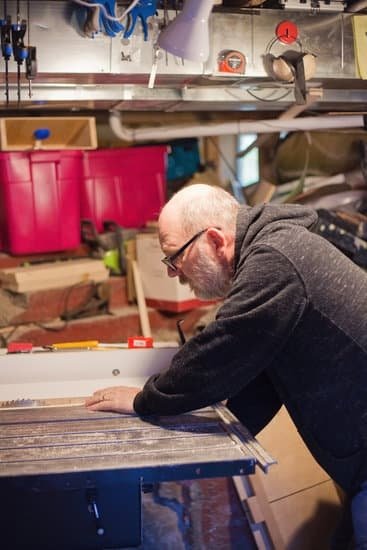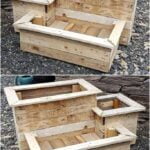Wood selection is a crucial aspect of any woodworking project, determining not only the overall aesthetics but also the durability and functionality of the final piece. Whether you’re building furniture, cabinetry, or even flooring, choosing the right type of wood is essential for achieving the desired results.
In this article, we will delve into the intricacies of wood selection, exploring the various factors to consider and understanding how different wood species and characteristics can impact your project. By mastering the art of picking wood for woodworking projects, you’ll be able to create stunning pieces that stand the test of time.
When it comes to selecting wood for woodworking projects, there are several key criteria to keep in mind. Factors such as strength, workability, appearance, and sustainability all play a role in determining which type of wood is best suited for your project. Understanding these factors and how they interplay with your specific needs is vital in ensuring that your finished product meets your expectations.
One important consideration when selecting wood is understanding the differences between hardwoods and softwoods. While hardwoods are generally stronger and more durable than softwoods, there are instances where using a certain type of softwood may be more appropriate. Additionally, being able to identify and utilize different wood grains and patterns can add unique character to your creations. It’s not just about choosing a beautiful piece of wood; it’s about understanding how its visual aspects can enhance your design.
By diving into the world of wood selection for woodworking projects, you will gain valuable knowledge on how different woods perform in various applications. From furniture to cabinetry to flooring, each project has specific requirements that must be matched with suitable wood characteristics. Furthermore, considering sustainability and environmental impact by opting for eco-friendly wood options allows you to contribute responsibly to preserving our natural resources.
In the following sections of this article, we will explore these topics further-delving into different types of woods and their characteristics as well as offering expert advice on identifying quality wood and avoiding common pitfalls. So, whether you’re a seasoned woodworker or just starting out, this guide will equip you with the knowledge and understanding necessary to select the perfect wood for your woodworking projects.
Factors to Consider
When embarking on a woodworking project, it is crucial to carefully consider the factors that will influence your choice of wood. The right wood can make all the difference in the outcome and durability of your project. Here are some key criteria to keep in mind when selecting wood for your woodworking projects:
1. Strength and Durability: Evaluate the strength and durability requirements of your project. Some projects, such as furniture or flooring, may require stronger woods that can withstand daily use and wear. Consider factors such as moisture resistance, hardness, and weight-bearing capacity.
2. Appearance and Aesthetics: The visual appeal of the wood is an important aspect to consider, especially for projects like cabinetry or decorative items. Different types of woods have unique colors, grains, and patterns that can enhance the overall look of your finished piece. Take into account how the wood will complement or contrast with other materials in your project.
3. Workability: Consider how easy or difficult it is to work with a particular type of wood. Some woods are more prone to splitting or warping, while others may be easier to cut, shape, or join together. Take into account your level of experience and the tools you have available when choosing a wood that matches your abilities.
To assist you in making an informed decision about the right type of wood for your project, here are two useful lists:
Factors to Consider:
- Strength and Durability.
- Appearance and Aesthetics.
- Workability.
Tips for Choosing Wood for Different Projects:
- Furniture: Look for durable hardwoods like oak or maple that can withstand daily use.
- Cabinetry: Consider attractive hardwoods like cherry or walnut for their rich tones.
- Flooring: Opt for strong hardwood species like hickory or ash that can handle heavy foot traffic.
By carefully considering these key criteria and utilizing the lists provided, you can ensure that you select the right wood for your woodworking project. Remember, each project is unique, and understanding the specific requirements will help you make an informed decision that will result in a successful and long-lasting finished piece.
Types of Wood
Wood selection is a critical aspect of any woodworking project, as the type of wood used will greatly influence the final result. There are various types of wood available, each with its own unique characteristics and properties. Understanding the different wood species and their characteristics is essential for selecting the right wood for your project.
Hardwoods
One category of wood species is hardwoods. Hardwoods come from deciduous trees that shed their leaves annually. These woods are generally more durable and dense compared to softwoods. They have a tighter grain structure, making them strong and resistant to wear and tear. Common types of hardwoods include oak, maple, mahogany, walnut, and cherry.
Softwoods
Another category of wood species is softwoods. Softwoods come from evergreen trees that bear cones instead of flowers like hardwoods. Despite their name, softwoods can still be quite sturdy, although they are generally less dense than hardwoods. Softwoods tend to be easier to work with due to their lighter weight and typically straighter grain patterns. Some popular softwood varieties include cedar, pine, fir, and spruce.
Exotic Woods
In addition to hardwoods and softwoods, there are also exotic woods that offer unique qualities not found in domestic woods. Exotic woods are known for their distinct colors, grain patterns, and natural beauty. They can be more expensive and harder to source but can add a touch of luxury to any woodworking project.
It’s important to consider the specific characteristics you need for your project when choosing a type of wood. Factors such as durability, strength, density, appearance, availability, and cost should all be taken into account when deciding on the best wood species for your woodworking project’s requirements.
By exploring the different types of wood species available and understanding their characteristics, you can make an informed decision about which type of wood is most suitable for your specific project. Whether you’re building furniture, cabinetry, flooring, or any other woodworking project, selecting the right wood will ensure a high-quality end result that meets your desired aesthetic and functional needs.
Hardwoods vs. Softwoods
Wood selection is a crucial step in any woodworking project, and understanding the differences between hardwoods and softwoods is essential for choosing the right type of wood. Hardwoods and softwoods have distinct characteristics that make them suitable for different applications.
Hardwoods come from deciduous trees, which are trees that shed their leaves annually. They are known for their durability and strength, making them ideal for furniture, cabinetry, and flooring projects. Some common types of hardwoods include oak, maple, walnut, and cherry. These woods have a tight grain structure which gives them a smooth finish when sanded.
On the other hand, softwoods come from evergreen trees, which keep their needles year-round. Softwoods are generally less dense than hardwoods and easier to work with due to their softer nature. Common softwood species include pine, cedar, fir, and spruce. Softwoods are often used for construction purposes such as framing and decking.
When choosing between hardwoods and softwoods for your woodworking project, it’s important to consider factors such as the desired outcome of the project, the type of joinery needed, and the overall aesthetics you want to achieve. Hardwoods are preferred for projects that require durability and longevity while softwoods may be more suitable for projects that need ease of workability.
| Characteristics | Hardwoods | Softwoods |
|---|---|---|
| Density | Higher density | Lower density |
| Strength | High strength | Moderate strength |
| Grain Structure | Tight, complex grain structure | Simple, straight grain structure |
| Workability | More difficult to work due to density | Easier to work with due to softer nature |
Wood Grains and Patterns
When selecting wood for woodworking projects, it’s important to consider the grain patterns of the wood. The grain pattern refers to the arrangement of fibers in a piece of wood, which can greatly affect the overall appearance and durability of your project. Understanding how to identify and utilize different grain patterns will enhance the aesthetic value and structural integrity of your woodworking projects.
Identifying Grain Patterns
There are three main types of grain patterns: straight, curly, and burl. Straight grain is the most common and easily identifiable pattern as it features parallel lines running throughout the wood. This pattern is often seen in species like oak or maple. Curly grain, on the other hand, presents a wavy or rippled effect that adds visual interest to a piece.
It is usually found in woods such as cherry or walnut. Burl grain is highly prized for its unique and irregular swirls or knots that create intricate patterns. As burl occurs due to a tree’s response to stress or injury, it is less common but highly sought after by woodworkers.
Utilizing Grain Patterns
The different grain patterns can be strategically utilized in various woodworking projects to enhance their design. For example, straight-grained wood is ideal for creating pieces with clean lines or for showcasing intricate joinery as it provides an even surface that can showcase detailed craftsmanship.
Curly-grained wood, on the other hand, can add elegance and depth to furniture pieces like tables or chairs as the rippled patterns catch light beautifully. Burl-grained wood lends itself well to decorative accents such as turned bowls or veneered surfaces since its unique patterns make each piece visually striking.
Treating Grain Patterns
To truly highlight the beauty of different grain patterns, it is important to properly treat them during the finishing process. Sanding the wood smooth before applying a finish ensures that the grain patterns are crisp and well-defined.
Applying a clear finish can enhance the natural colors and patterns of the wood, while staining can further emphasize or alter the appearance of the grain. It is crucial to experiment with different finishes and techniques on scrap pieces of wood before committing to a specific treatment for your project.
Understanding how to identify and utilize different grain patterns in woodworking will allow you to choose the most suitable wood for your projects. Whether you want straight-grained elegance, rippled richness, or unique burl patterns, selecting the right wood and treating it properly will elevate your woodworking endeavors to new levels of craftsmanship and beauty.
Best Woods for Different Projects
Furniture
When it comes to choosing the best wood for furniture projects, several factors need to be considered such as the desired aesthetic, durability, and workability. Hardwoods are often the preferred choice due to their strength and natural beauty. Woods like oak, maple, and cherry are popular options for furniture making as they offer both stability and a rich color palette.
Oak is known for its durability and prominent grain pattern which adds character to any piece of furniture. Maple is another common choice known for its light color and smooth texture, making it suitable for contemporary designs. Cherry wood offers a warm reddish-brown hue that deepens over time, creating timeless pieces with a luxurious feel.
Cabinetry
Cabinets require wood that not only looks appealing but also withstands daily wear and tear. Hardwood species like birch and walnut are commonly used in cabinetry due to their durability and versatility.
Birch is an excellent choice for cabinets as it has a consistent grain pattern and pale color that can easily be stained or painted according to preference. Walnut, on the other hand, offers a darker tone with unique grain patterns that add warmth and sophistication to any kitchen or bathroom design.
Flooring
Selecting the right wood for flooring requires careful consideration of durability, hardness, and visual appeal. Oak is widely regarded as one of the best choices for hardwood flooring due to its strength and resistance to dents and scratches. Its wide array of grain patterns adds natural beauty to any space.
Another noteworthy option is hickory which boasts exceptional strength and provides a rustic look with its dramatic color variations. For those seeking an exotic touch, bamboo flooring is an eco-friendly alternative that offers remarkable hardness while giving rooms a distinct ambiance.
Matching the characteristics of different woods to specific project requirements ensures the end result meets both functional needs and aesthetic preferences. Whether it’s furniture, cabinetry, or flooring, understanding the strengths and limitations of each wood species is key to creating long-lasting and visually stunning woodworking projects.
Sustainability and Environmental Impact
Woodworking is a craft that relies heavily on the use of natural resources, particularly wood. As awareness for environmental impact and sustainability grows, it becomes increasingly important for woodworkers to consider eco-friendly wood options. This section will discuss the significance of sustainability in woodworking and provide insights into choosing environmentally responsible wood for projects.
One of the key reasons why sustainability is crucial in woodworking is the preservation of forests and natural habitats. By selecting eco-friendly wood options, woodworkers can support responsible forestry practices that ensure the long-term health and viability of forest ecosystems. Sustainable wood comes from well-managed forests where trees are harvested with careful consideration for regeneration and biodiversity conservation.
When looking for sustainable wood options, certification labels such as Forest Stewardship Council (FSC) or Programme for the Endorsement of Forest Certification (PEFC) can guide woodworkers towards environmentally responsible choices. These certifications guarantee that the wood has been sourced from properly managed forests that prioritize conservation, community engagement, and adherence to strict environmental standards.
Another aspect to consider when choosing eco-friendly wood is its carbon footprint. Some woods require less energy-intensive processing methods than others, reducing their overall greenhouse gas emissions. For example, locally sourced woods often have a lower carbon footprint compared to imported varieties due to reduced transportation distances.
Furthermore, using reclaimed or salvaged wood can significantly reduce environmental impact. Reclaimed wood involves repurposing lumber from old structures, such as barns or demolished buildings, giving it new life instead of contributing to deforestation. This not only helps minimize waste but also adds character and history to woodworking projects.
Working with Reclaimed Wood
Working with reclaimed wood can be a rewarding and environmentally friendly choice for woodworking projects. Reclaimed wood is salvaged from old structures, such as barns, factories, or even old furniture pieces, and given new life in a new project. However, working with reclaimed wood requires careful selection and preparation to ensure the best results.
When selecting reclaimed wood for your woodworking project, there are a few key tips to keep in mind. First, consider the source of the wood. It’s important to ensure that the reclaimed wood comes from a reliable and reputable supplier who sources their materials responsibly. This ensures that the wood has been properly treated and does not contain any harmful substances or pests.
Next, carefully inspect the reclaimed wood for any damage or defects. Look for signs of rot, insect infestation, cracks, or warping. These issues can affect the structural integrity of your final piece and may require extensive repairs or adjustments during the woodworking process.
Once you have selected your reclaimed wood, proper preparation is crucial before starting your project. Start by removing any nails, screws, or other hardware embedded in the wood. This will prevent damage to your tools and ensure a smooth working process.
After removing hardware, it’s important to clean the reclaimed wood thoroughly. Dust it off and use a soft brush or vacuum cleaner to remove any dirt or debris that may be lodged in crevices or between boards. If necessary, you can also lightly sand the surface of the wood to remove any rough patches.
Finally, it’s essential to let the reclaimed wood acclimate to its new environment before beginning construction. Wood absorbs moisture from its environment, so allowing it to adjust to changes in temperature and humidity can help prevent warping or cracking down the line.
Working with reclaimed wood requires extra care during selection and preparation stages but can result in unique and character-filled pieces that have an interesting history behind them. By following these tips for selecting and preparing reclaimed wood, you can ensure that your woodworking project turns out beautifully and stands the test of time.
Wood Selection Tips and Techniques
When embarking on a woodworking project, selecting the right wood is crucial to its success. The quality of the wood can greatly impact the durability, aesthetics, and overall performance of the finished product. To help you make informed choices, here are some expert tips and techniques for identifying quality wood and avoiding common pitfalls.
One important factor to consider when evaluating the quality of wood is its moisture content. Moisture affects how the wood will behave during and after the construction process. Too much moisture can cause warping, cracking, or shrinking, while too little moisture can result in brittle wood that is prone to splitting. It is recommended to use a moisture meter to determine the moisture content of the wood before using it in your project.
The appearance of the wood also plays a significant role in its quality. Check for any defects such as knots, splits, or uneven grains as they can weaken the structure and compromise its durability. Additionally, inspect the surface for smoothness and consistency. High-quality wood should have a uniform color and texture without any blemishes or rough spots.
Another aspect to consider when selecting wood is its stability. Different woods have different levels of dimensional stability, which refers to how much they expand or contract with changes in humidity or temperature. For projects that will be exposed to varying environmental conditions, it is important to choose woods that are known for their stability.
| Tips | Techniques |
|---|---|
| Determine moisture content using a moisture meter | Inspect for defects like knots or splits |
| Evaluate the appearance for uniform color and texture | Check the surface for smoothness and consistency |
| Choose woods known for their stability | Be aware of dimensional stability variations among wood species |
By following these tips and techniques, you can ensure that you are selecting high-quality wood for your woodworking projects. This will not only result in a more aesthetically pleasing finished product, but also one that is durable and built to last. Remember, the right wood can make all the difference in the success of your project.
Conclusion
In conclusion, mastering the art of selecting the perfect wood for your woodworking projects is crucial for achieving success and satisfaction in your craft. Throughout this article, we have explored the various factors to consider when choosing wood, such as its characteristics, grain patterns, and sustainability.
One of the key takeaways is understanding the differences between hardwoods and softwoods and choosing the right type for your project. Hardwoods are known for their durability and strength, making them ideal for furniture and cabinetry. Softwoods, on the other hand, are more affordable and easier to work with, making them suitable for flooring and other projects.
Additionally, we have discussed the importance of considering sustainability and environmental impact when selecting wood options. Choosing eco-friendly woods not only helps preserve our natural resources but also contributes to responsible woodworking practices.
Furthermore, we have touched on working with reclaimed wood and provided tips on selecting and preparing it for woodworking projects. Reclaimed wood not only adds character to your projects but also promotes recycling and reduces waste.
To master the art of selecting the perfect wood, it is crucial to develop an understanding of quality wood identification techniques while avoiding common pitfalls. Seeking expert advice can be immensely helpful in honing these skills.
By considering all these factors and applying the knowledge gained from this article, you will be well on your way to becoming a skilled woodworker who consistently selects the most suitable wood for each project. Remember that practice makes perfect in any craft, so keep experimenting with different woods over time to further enhance your skills. Happy woodworking.
Frequently Asked Questions
How do I choose wood for woodworking?
When it comes to choosing wood for woodworking projects, there are several factors to consider. First, you need to determine the purpose of your project. Is it something that will be primarily decorative or functional? This will help you decide on the type of wood you should use.
Next, consider the appearance and grain pattern of the wood. Each type of wood has its unique characteristics, so think about what kind of visual impact you want your piece to have. It’s also important to take into account the workability of the wood – some woods are easier to shape and cut than others. Finally, consider the cost and availability of the wood as per your budget and location.
What is the best wood for beginner woodworking?
For beginners in woodworking, it is generally recommended to start with a softer and more forgiving wood type like pine or poplar. These woods are easier to work with due to their relatively straight grain and softer texture, making them less likely to splinter or crack during cutting or shaping processes.
Additionally, softer woods tend to be more affordable compared to hardwoods, which is helpful for beginners who may make mistakes or require more practice before moving on to more expensive materials.
Does it matter what type of wood is chosen for a project?
Yes, it does matter what type of wood is chosen for a woodworking project. The choice of wood can significantly impact both the aesthetic appeal and durability of the finished piece. Different types of wood have different characteristics such as hardness, grain pattern, color variations, and resistance against moisture or pests.
For example, if you’re building outdoor furniture that will be exposed to the elements, it’s crucial to choose a weather-resistant wood like teak or cedar that can withstand rotting or warping caused by moisture exposure. Similarly, if you’re creating a piece with intricate detailing or carving work, selecting a fine-grained hardwood like cherry or maple can provide better results due to their ability to hold detail well. Overall, considering the specific requirements and properties of your project will guide you in choosing the most suitable type of wood.

Hi everyone! I’m a woodworker and blogger, and this is my woodworking blog. In my blog, I share tips and tricks for woodworkers of all skill levels, as well as project ideas that you can try yourself.





